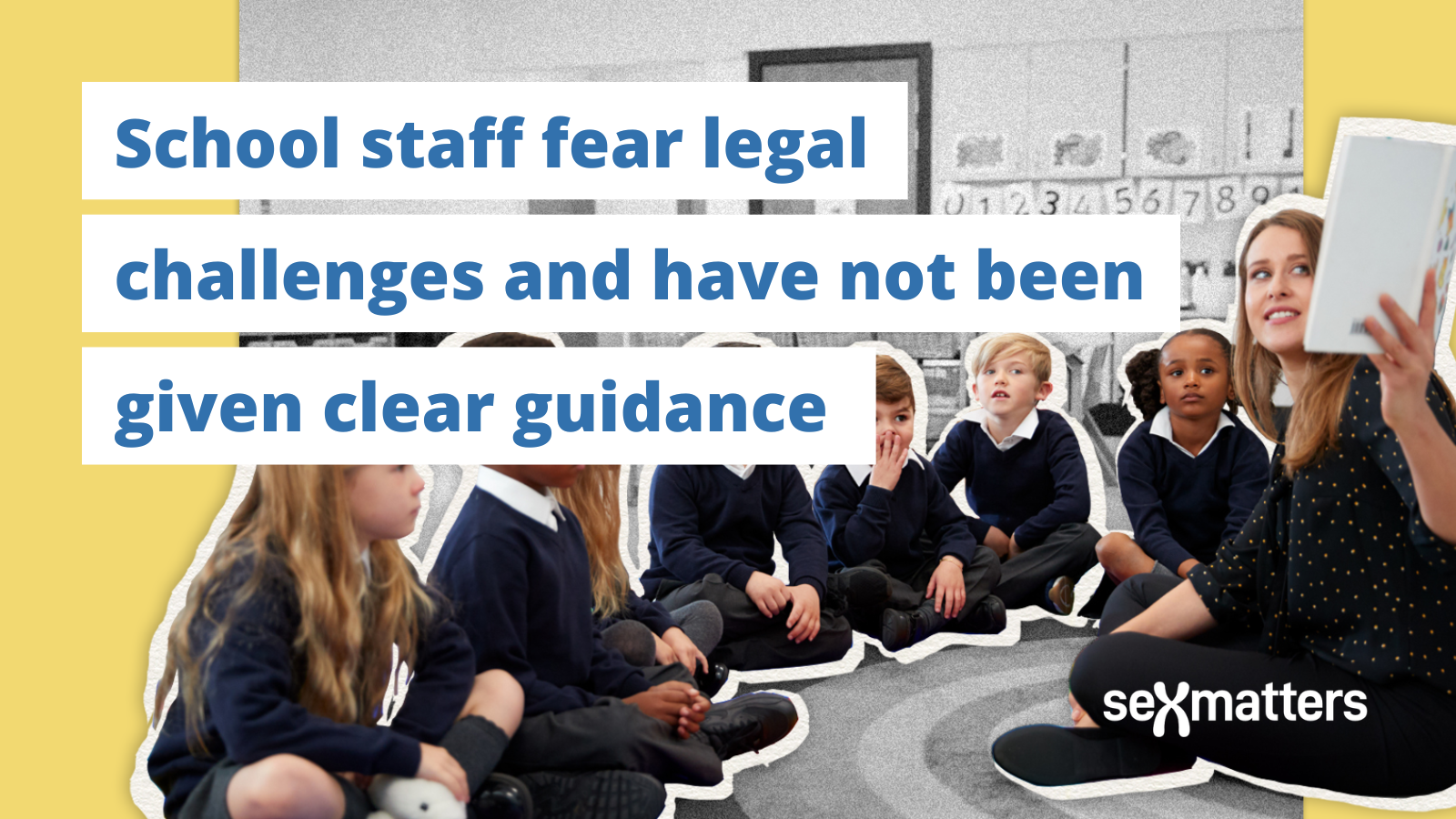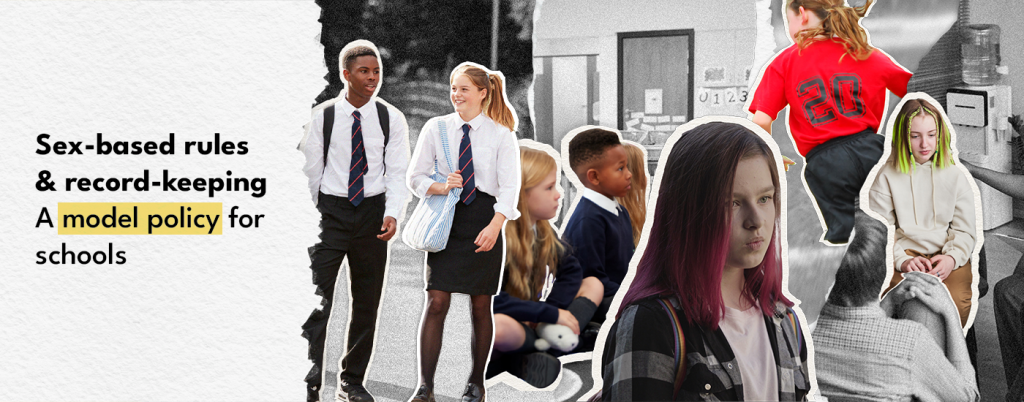How should schools respond to “gender questioning” children?

Sex Matters has published a model policy on sex-based rules and data collection. Our policy applies to a whole school – all the pupils, not just the gender-questioning ones – and concerns how a school records, communicates and uses data and language on the sex of all pupils. It provides a school with a framework for clearly articulating policies which treat girls and boys differently, so that they are not ambiguous or seen as open to negotiation.
Until now, many schools have not had to think carefully about these everyday rules, norms and routines, such as why children are not allowed into opposite-sex toilets and changing rooms, or why girls can wear trousers but boys are not allowed to wear skirts. So when school leaders are asked to flex the rules for a child who has adopted a transgender identity, they often do not know how to respond. They may be placed under pressure by pupils, parents, activist organisations or teachers, and by decisions and promises made by other schools or other people, before the decision reaches them. They fear legal challenges, and they have not been given clear guidance.
What our model policy says is that schools already have policies and systems for responding to children with additional needs, or who are going through a difficult period.
If a child is experiencing anxiety or behavioural issues linked to gender distress, the school may agree a plan to help them to overcome distress and remove their barriers to education, where this is reasonable and practical. But what schools cannot safely do is pretend that a child has changed sex, exempt them from rules and safeguards, or treat their sex as confidential.
Cass Review recommendations
The Cass Review found that children experiencing gender issues have a wide range of associated conditions and for most of them, childhood gender incongruence is likely to resolve over time without medicalised transition. It recommended that the healthcare system provides a holistic package of care, which may involve:
- supporting a young person to get back into school
- diagnosing autism or ADHD
- offering supportive group sessions offering talking therapies to help anxiety, depression or trauma
- building resilience
- working with the whole family to address breakdowns in relationships
- providing more information about gender expressions and the range of possible interventions.
The review emphasised that parents should be actively involved in any decisions about the care of their child, unless there are strong grounds to believe that this may put the child or young person at risk. The central aim of the care plan is to help young people to thrive and achieve their life goals, starting with education.
The Cass Review recommended that clinicians agree a tiered approach that:
- addresses urgent risk
- reduces distress and associated mental-health issues and psychosocial stressors, so that the young person is able to function and make complex decisions
- co-develops a plan for addressing the gender issues, which may involve a combination of social, psychological and physical interventions.
Schools have a part to play in each stage, drawing on their existing frameworks for supporting children at risk of harm, those experiencing mental distress and those who need an individual plan to help them access education.
Responding to individual children in line with Cass and the law
Children with gender-related distress or those who say they are transgender may be covered by the protected characteristic of “gender reassignment” in the Equality Act. This does not mean that a child’s sex has changed, or that they must be treated as the opposite sex.
Treating a child differently in relation to school rules and policies because they may have a protected characteristic is likely to be direct discrimination. Schools must not encourage pupils to think that a gender non-conforming boy should be excluded from appropriate facilities for boys, or a gender non-conforming girl from girls’ facilities.
Children, parents and activist organisations sometimes argue that treating a child the same as other pupils in relation to sex-based rules is unlawful indirect discrimination. But the Equality Act allows schools to argue that a rule is a “proportionate means to a legitimate aim”. If the rules and policies have been thought through and are fair and necessary, they can be justified.
In any case the Cass Review findings do not suggest that there is a detriment from not treating a child as the opposite sex at school, because there is no clear evidence that “social transition” improves mental health. Furthermore, from the school’s point of view being clear about a child’s sex is necessary to keep them safe.
Responding to “gender questioning” pupils
Schools should apply the same principles and policies to children whose issues include gender distress as they do to other children with additional needs. Any adjustments to school rules and practice should be time-limited and kept under review as part of an individual plan, usually in consultation with parents and taking into account any clinical advice.
For example, if a child has severe anxiety about using appropriate single-sex facilities, possible adjustments might include agreeing that the pupil can use a separate (unisex) changing room or toilet for a period of time, where this is safe and practical. But it should be made clear that this is not a promise that the child may in future use opposite-sex facilities at school, or that unisex facilities will always be available.
Being clear about sex-based rules in school does not mean that a school should promote gender stereotypes. Most schools allow girls to wear trousers. Some schools have only trousers and no skirts in their uniform; some have no uniform at all. But whatever the school rules are they apply to all. And school rules do not preclude children expressing themselves with steps such as haircuts, name-changes, mannerisms, interests or words used about themselves, among their friendship group.

